Please visit the up-to-date page of recommended gear at our new VOHeroes site here:
https://www.voheroes.com/my-gear/
Hey, there!
I’ve not only been asked countless times to recommend the microphones, computers, editing equipment and other technology I personally use, but have also written about the more mundane but really useful things I use (like my chair). One of my amazing Pros, Jonathan, suggested that I compile a list, and keep it updated, of those things I both recommend and use myself.
Not a bad idea.
Here you go: my entire home studio set-up, along with (mostly) Amazon links to get each of the items listed at a nice discount. Items are divided into major categories by tabs below, like hardware, software, adapters and the like. I hope you find what you’re looking for here – if you don’t, leave me a comment below and I’ll post other items I use.
[By the way, if you want a similar list detailing what I use and recommend in my home on-camera video studio, you can find that here.]
Voice over gear:
Hardware: Computer
Apple MacBook
This is the first MacBook to be manufactured without a fan – and that means complete silence when recording. Sure, there’s only one port (a USB-C one, requiring the MultiPort Adapter listed below), and it requires a powered hub if you want to plug in all your favorite USB gear, but the size, screen quality, full-size keyboard and, most importantly, absence of fan noise makes this the best choice for performers who are recording audio on a regular basis.
CRUCIAL: to make sure your MacBook is completely set up, be sure to at least order these two essential accessories as well:
1. A hub: choose either the Sentey 10-port USB-3 Powered Hub (if available) OR the Anker 10-port USB-3 Powered Hub:
https://www.vo2gogo.com/get-usb3hub OR https://www.vo2gogo.com/get-ankerhub
2. An adapter: Also get the Apple USB-C Digital AV Multiport Adapter:
https://www.vo2gogo.com/get-usbc-multiport-adapter
Hardware: Mouse/Trackball
Logitech M570 Wireless Trackball
Quiet, accurate, precise, light, long battery life, programmable buttons and adjustable scrolling speed: this is my go-to pointing and clicking device.
Like many inexpensive items, I have two – one on my desk, and one in my go-bag, so I don’t have to pack and unpack yet another item when I travel.
Hardware: Backlit Bluetooth Keyboard
Logitech K811 Illuminated Wireless Keyboard
I love this keyboard. It comes to life (lights up) when you hover your fingers over it, and features USB charging (yay! no batteries to change!).
And…you can instantly switch between typing on your laptop, your tablet, your smartphone and other devices: this is my new keyboard krush. (This is the Mac version – search for the 810 on Amazon for the Windows version)
Hardware: USB-C Hub
Anker 10-port USB-3 Powered Hub
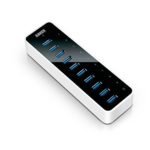 [Click image to enlarge] If you go with the MacBook I recommend and use, you’re going to need this device to connect printers, mice, microphones, hard drives and the like that are USB-based.
[Click image to enlarge] If you go with the MacBook I recommend and use, you’re going to need this device to connect printers, mice, microphones, hard drives and the like that are USB-based.
Like many inexpensive items, I have two – one on my desk, and one in my go-bag, so I don’t have to pack and unpack yet another item when I travel.
Hardware: Personal Space Cooler
Evapolar Personal Air Conditioner
One of the uncomfortable side effects of recording in a soundproof vocal booth (or a closet with the door closed) is that it gets warm in there, real fast. And the thought of running HVAC ductwork into your recording space would frighten anyone into not doing it – and just suffering in the heat.
I’ve been using The Evapolar ever since I backed it on Kickstart a few years back, and I’m constantly amazed at how well it works. It makes noise, so you use it in-between recording your content (like while you’re editing or doing admin work), but once it’s cooled your space off, it stays that way for a chapter or two’s worth of recording.
And the Evapolar doesn’t require any ductwork to cool down your space – it just sits there, about a foot or so square, and keeps you cool.
Hardware: Narration Microphone
Audio-Technica AT-2020 USB Plus
The AT-2020 has been my go-to microphone, both at home and on the road, for over a decade. It’s far less expensive than its quality would dictate, and it’s the only USB microphone with real-time monitoring and a high-end analog-to-digital conversion circuit. I have done nearly all of my audition and production work with this microphone, and I can’t recommend it highly enough.
Like many inexpensive items, I have two – one on my desk, and one in my go-bag, so I don’t have to pack and unpack yet another item when I travel.
Hardware: Pop Filter
The VO2GoGO Mike Sock
I finally found a source for the perfect athletic sock. I’ve been using this as a pop filter on my large-diaphragm microphones for years. 100% cashmere, the Mike Sock fits perfectly over the AT-2020 USB Plus. It’s $9 plus shipping. Click here to purchase.
Like many inexpensive items, I have two – one on my desk (on my AT-2020 USB Plus), and one in my go-bag (already fitted on the AT-2020 USB Plus I have packed), so I don’t have to pack and unpack yet another item when I travel.
Hardware: Earbuds
Panasonic RP-HJE120-R Earbuds
Comfortable and incredibly accurate sound reproduction from an inexpensive set of name brand earbuds? I’ll take that any day – and I’ve done so for more than 15 years. The Sony’s I loved are eclipsed by these.(price may vary from $10). Click here to purchase on Amazon.
Like many inexpensive items, I have two – one on my desk, and one in my go-bag, so I don’t have to pack and unpack yet another item when I travel.
Hardware: Headphones
Sony MDR7506 Professional Headphones
If earbuds aren’t your thing, and you really want the heft and solid feel of actual headphones, then I recommend these. I used these exact headphones when I worked in radio for over 30 years, and although I don’t use them now (in favor of the earbuds above), these are the best bang for your headphone buck.
Hardware: External Storage Hard Drive
Western Digital 3TB My Passport Ultra HD
This is the drive that I use for extra storage (not for backup – that’s below) – the MacBook has a 512 GB internal SSD drive (again, silent), and that’s not enough storage for all that I do – so this drive is where I store all my data. The only thing that I use the internal SSD drive for is to run applications – they run faster than they would on a traditional hard drive.
Hardware: Backup Hard Drive
Western Digital 4TB My Passport Ultra HD
This is the drive that I use for backup (not for external storage – that’s above), and I have four of them, all in different colors. For a full explanation about why you should clone my insanely over-engineered backup system, click here.
On-camera gear:
Hardware (Video): Video Camera
Apple iPod Touch
I shoot some of my videos with the iPod Touch, a device that not only sports two world class cameras, but allows me to transfer the video I’ve shot, via WiFi/Bluetooth, right to my Macintosh for instant editing (in Screenflow, listed as a bonus below). Sure, I could get a dedicated camera with all kinds of bells and whistles, but this is all I need. I have three of them that I often shoot with, all at the same time, at different angles, to give me editing options. Added bonus: they’re less than half the width of a deck of playing cards. Click here for more information.
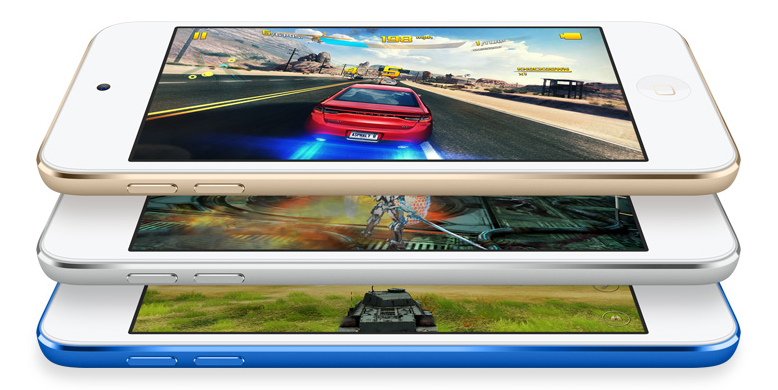
Hardware (Video): Webcam
Logitech C922X Pro Stream Webcam
When I coach over zoom, record a video for this blog, or for Facebook or Youtube, the best camera for the price is this beauty. It nestles right on top of your laptop’s top edge, and it’s secret sauce is that it does all the heavy computation required to give you great video right in the camera itself, and all your laptop has to do is accept the data from it. Plugs right in to any USB port, and the free Logitech Gaming Software lets you manually or automatically set brightness, contrast, gain, exposure and focus. It’s amazing.
Hardware (Video): Studio Lights
NEEWER 160 LED Dimmable Panel Video Light
You’ll need two or three of these. When I coach over zoom, record a video for this blog, or for Facebook or Youtube, the key to good video (besides a great camera, like the ones above) is to be lit well. If you’re not, your camera will struggle, and you’ll look…bad. These LED panels are great – it’s what you see me lit with when you watch any of my on-camera work from my recording studio. They are small, lightweight, and inexpensive. And…they are dimmable, so if you follow a classic two- or three-point lighting system, each one will work well for a key light (100% brightness), fill light (50% brightness of key light) and hair light (optional, 50% brightness of key light). You can put them on any tripod, like the one below, or you can order stands for them, or you can mount them permanently in the ceiling.
Hardware (Video): Tripod
Sunpak PlatinumPlus Ultra 6000PG 61″ Tripod
You may need one of these for your camera and optionally, for each of your lights. These tripods are excellent – inexpensive, well crafted, sturdy and they have a pistol grip tilt adjustment. I use them for my self-tape camera, and also for my key and fill lights in my studio. They are adjustable to 61″ high, perfect for lighting yourself if you’re seated at a desk.
Hardware (Video): Shotgun Microphone
Audio-Technica AT875R Shotgun Microphone
When I record videos in my recording studio, in my chair, I use the Logitech C922X camera above, and use this very inexpensive (but really good quality) shotgun microphone from the same company that makes my go-to narration microphone (also above). The capture area of this microphone is very focused, so it rejects much of the boominess of any room. I point it at my mouth, and it’s usually just off camera. It does not require a battery to operate, and I plug it into the Behringer mixer below (you’ll need to press the red PHANTOM button on the mixer to power the mic).
Hardware (Video): Lavalier Microphone
Audio-Technica ATR3350iS Lavaliere Microphone
When I want to record anything on video that might require movement of the mic, hand held or on a selfie stick, I use the iPod Touch above, and plug in this very inexpensive (but really good quality) lavalier microphone from the same company that makes my go-to narration microphone (also above). The “iS” at the end of the model number means that it comes with an adapter for iOS devices that lets you simultaneously plug in the microphone and a set of headphones. The output level is a bit low, but easily normalized in your favorite editing software.
Hardware (Video): Mixer
Behringer XENYX Q1202USB
The Behringer XENYX Q1202USB mixer is usually less than $100, has 4 XLR inputs (so you can have 4 people speaking at once with their own microphones), and each microphone channel has it’s own EQ, compression and level inputs. The mixer itself then plugs into your computer’s USB input. You then control the volume on everyone’s mic individually, and Audacity records the mixed sound.
Again, this is ONLY if you’re using a microphone that requires phantom power, like the AT875R shotgun mic above, and you might want to add more microphones for a multiple input session. You can also use a simple XLR to USB adapter, like the SHURE adapter below, if it’s just going to be you on mic and no one else.
Hardware (Video): XLR to USB Mic Adapter
SHURE X2U XLR to USB Adapter
The SHURE X2U XLR-to-USB microphone adapter is usually less than $100, and has excellent audio quality for recording live video. It’s even simpler to use than the mixer above: you plug your XLR studio mic, like the AT875R above, into this adapter, then the adapter itself plugs into your computer’s USB input. You control the level your mic sends to your recording software (I use either Audacity for seperate audio recordings, or select this adapter as the audio input for Screenflow, my go-to video editing software), and the level in your headphones/earbuds. You also can enable 48v phantom power, should your mic require it (the AT875R does).
If you want to add more microphones for a multiple input session, you should instead use a mixer, like the Behringer above.
BONUS: Screen Recording/Video Editing Software
Telestream Screenflow
Yes, I know this is the Hardware tab, but rather than make you click over to the Software tab, I figured I’d complete my video recording recommendations with the one piece of software I use to tie it all together: Screenflow. Although most Windows users will use Camtasia for screen recording, I absolutely adore Screenflow from Telestream. This is a company that makes much higher end video editing and broadcast software, and the quality of those products has trickled down to Screenflow, which I use for all of my lessons, presentations and other screen-based production. Here’s the added bonus: the editing features in Screenflow are so easy to use, so complete, and so straightforward, I haven’t launched Final Cut Pro or iMovie in years. $99.00 with a free trial.
Software: Data Backup
Time Machine (Macintosh)
Time Machine is the backup software built into every Macintosh sold, and it’s awesome. Here’s how I use it in my insanely overengineered backup system.
Macrium Reflect (Windows)
I don’t use Windows anymore, but I have a long time colleague, and former Microsoft employee, Leo Notenboom, who absolutely adores Macrium Reflect for backup on Windows ($69). Believe me, if it’s good enough for Leo, it’s good enough for me.
Software: Sound Recording/Editing (Single Track)
Audacity
Audacity is free, it’s supported by hundreds of developers around the world, and it’s used by more people than any other open-source sound software ever. Audacity records at the same quality level as any other software, including ProTools and Logic, it’s available for Macintosh, Windows and Linux, it’s got a light footprint on your hard drive, it boots up almost instantly, and it’s constantly getting better and better – I wouldn’t use any other software for recording my dry tracks and audiobook work. I do use ProTools for multi-track production (shown below), but for raw single audio tracks, I’m all about Audacity.
Software: Sound Recording/Editing (Multi-track)
Avid Pro Tools with iLok
For decades, I used Pro Tools for everything: multi-track mixes, demos, commercial production, radio humor, sweetening films and even dry voice tracks. I now use Audacity for voice tracks and audiobook work, but Pro Tools gets fired up every time I produce a demo for a voice over client.
Software: Mobile Audition Recording
Rehearsal® Pro
I created Rehearsal® Pro to help me manage my acting career, and while I was at it, I added the ability to record and email VO auditions in a pinch. It’s become the go-to app for actors, and it’s great for those quick and dirty auditions on the go. $20, iPhone/iPad/iPod Touch. Not available for Android.
Software: MP3 Exporting
LAME
LAME is a free plugin, required by Audacity, and exports MP3s from Audacity at the same quality level as other MP3 exporting software, and it’s available for Macintosh and Windows.
Software: Audiobook Mastering
The Levelator
The Levelator is free software, originally created to “level” out the different recorded volumes of participants in podcasts, and just happens to treat raw audio in a way that is completely compliant with Audible’s standards for production for ACX. Drag and drop, baby. It’s available for Macintosh and Windows.
Software: Mileage Tracking
MileIQ
MileIQ helps you automatically record all trips you take, both work and personal. You’d be surprised at how much you might be leaving on the table come tax time, given all the auditions, work, trips to your agent’s office, studios, to get administration done, etc. MileIQ estimates that the average person has $6,900 in mileage/auto deductions each year, and many people let that pass them by. Don’t be that guy (or girl). $6 or less per month, free version available for infrequent drivers.
Software: Password Protection
Dashlane
Strong passwords are essential for staying safe in today’s digital world, but it’s clear that a long, strong password is not so easy to remember. Enter Dashlane, the very best password protection available. There are apps for Macintosh, iOS, Windows and Android – and it’s a snap to use. All of your passwords are both randomly generated, and easily pasted into the password text box of all your login forms. Don’t make the mistake of making your password easy to remember – that usually means it’s easy to crack.
Software: Skype Call Recording
ecamm Call Recorder
Imagine that every time you have a Skype call (with a client, doing an interview, creating content, whatever) your computer will automatically record both parties in the Skype session, and let you export video and audio of that call. It’s how I create reference copies of my coaching sessions to send to the clients for reviews, and how I interview people for the site. It’s great. $29.95 with a free trial.
Software: Screen Recording/Video Editing
Telestream Screenflow
Although most Windows users will use Camtasia for screen recording, I absolutely adore Screenflow from Telestream. This is a company that makes much higher end video editing and broadcast software, and the quality of those products has trickled down to Screenflow, which I use for all of my lessons, presentations and other screen-based production. Here’s the added bonus: the editing features in Screenflow are so easy to use, so complete, and so straightforward, I haven’t launched Final Cut Pro or iMovie in years. $99.00 with a free trial.
Software: Web Hosting
Dreamhost Web Hosting
More of a basic service than actual packaged or downloadable software, Dreamhost is where all of my sites, business and personal, are hosted. All services have good and bad streaks of support and up-time, but Dreamhost has been more reliable than most, and at a cost that is incredibly affordable. And I’ve made a special deal with them (that varies) to give my clients, students and visitors a discount on WordPress hosting.
Hardware: Computer
Apple MacBook
This is the first MacBook to be manufactured without a fan – and that means complete silence when recording. Sure, there’s only one port (a USB-C one, requiring the MultiPort Adapter listed below), and it requires a powered hub if you want to plug in all your favorite USB gear, but the size, screen quality, full-size keyboard and, most importantly, absence of fan noise makes this the best choice for performers who are recording audio on a regular basis.
CRUCIAL: to make sure your MacBook is completely set up, be sure to at least order these two essential accessories as well:
1. A hub: choose either the Sentey 10-port USB-3 Powered Hub (if available) OR the Anker 10-port USB-3 Powered Hub:
https://www.vo2gogo.com/get-usb3hub OR https://www.vo2gogo.com/get-ankerhub
2. An adapter: Also get the Apple USB-C Digital AV Multiport Adapter:
https://www.vo2gogo.com/get-usbc-multiport-adapter
Hardware: Pop Filter
The VO2GoGO Mike Sock
I finally found a source for the perfect athletic sock. I’ve been using this as a pop filter on my large-diaphragm microphones for years. 100% cashmere, the Mike Sock fits perfectly over the AT-2020 series mics. It’s $9 plus shipping, and you should get as many as you have microphones (1 if you’re doing a solo podcast). Click here to purchase.
Hardware: Earbuds
Panasonic RP-HJE120-R Earbuds
Comfortable and incredibly accurate sound reproduction from an inexpensive set of name brand earbuds? I’ll take that any day – and I’ve done so for more than 15 years. The Sony’s I loved are eclipsed by these.(price may vary from $10). Click here to purchase on Amazon.
Like many inexpensive items, I have two – one on my desk, and one in my go-bag, so I don’t have to pack and unpack yet another item when I travel.
Hardware: Headphones
Sony MDR7506 Professional Headphones
If earbuds aren’t your thing, and you really want the heft and solid feel of actual headphones, then I recommend these. I used these exact headphones when I worked in radio for over 30 years, and although I don’t use them now (in favor of the earbuds above), these are the best bang for your headphone buck.
SOLO PODCAST: Microphone
Audio-Technica AT-2020 USB Plus
The AT-2020 has been my go-to microphone, both at home and on the road, for over a decade. It’s far less expensive than its quality would dictate, and it’s the only USB microphone with real-time monitoring and a high-end analog-to-digital conversion circuit. I have done nearly all of my audition and production work with this microphone, and I can’t recommend it highly enough. It’s actually overkill for podcasting, but it’s utility is one of it’s strong suits.
Again, this is ONLY if you’re doing a SOLO podcast. If you have MULTIPLE HOSTS/GUESTS, use the AT2020 studio mics and Behrenger mixer below.
MULTIPLE HOST/GUEST PODCAST: Microphone(s)
Audio-Technica AT-2020 USB Plus
The AT-2020 series of microphones has not only a USB version for everyday VO work, but they have the exact same microphone in a traditional non-USB XLR format (for a lot less money). It has the same audio qualities of the Plus, but plugs into a traditional XLR input on a mixer (like the one we recommend below). You’ll want to get enough of these to cover you, your hosts and your guests – however many you’ll have speaking at once.
Again, this is ONLY if you’re doing a MULTIPLE HOSTS/GUESTS podcast. If you are doing a SOLO podcast, use the AT-2020 USB Plus mic listed above, without the need of a mixer.
MULTIPLE HOST/GUEST PODCAST: Mixer
Behringer XENYX Q1202USB
The Behringer XENYX Q1202USB mixer is usually less than $100, has 4 XLR inputs (so you can have 4 people speaking at once with their own microphones), and each microphone channel has it’s own EQ, compression and level inputs. The mixer itself then plugs into your computer’s USB input. You then control the volume on everyone’s mic individually, and Audacity records the mixed sound.
Again, this is ONLY if you’re doing a MULTIPLE HOSTS/GUESTS podcast. If you are doing a SOLO podcast, all you need is the AT-2020 USB Plus mic listed above: you DON’T need this mixer.
Hardware: External Storage Hard Drive
Western Digital 3TB My Passport Ultra HD
This is the drive that I use for extra storage (not for backup – that’s below) – the MacBook has a 512 GB internal SSD drive (again, silent), and that’s not enough storage for all that I do – so this drive is where I store all my data. The only thing that I use the internal SSD drive for is to run applications – they run faster than they would on a traditional hard drive.
Hardware: Backup Hard Drive
Western Digital 4TB My Passport Ultra HD
This is the drive that I use for backup (not for external storage – that’s above), and I have four of them, all in different colors. For a full explanation about why you should clone my insanely over-engineered backup system, click here.
Adapter: USB-C Multiport
Apple USB-C Digital AV Multiport Adapter
This allows the single USB-C port on the MacBook to accept power, the USB-3 powered hub, and an HDMI display to all connect to the MacBook simultaneously. No more limitations to what you can attach to your MacBook.
Like many inexpensive items, I have two – one on my desk, and one in my go-bag, so I don’t have to pack and unpack yet another item when I travel.
Adapter: Lightning-to-USB
Apple Lightning to USB Camera Adapter
Even though this product was originally designed to allow digital cameras to be attached to iPads and iPhones that use the Lightning adapter, it also works perfectly if you want to attach the AT-2020 USB Plus microphone (or any other USB microphone) to your iOS device for recording.
Cable: USB-C Charging
Apple USB-C Charge Cable
Sometimes, you don’t need anything connected to your MacBook but power, and along with the Apple 29w Power Adapter below, you can plug right in. I carry an extra one just in case I need to quickly and easily recharge my MacBook.
Adapter: Power
Apple USB-C 29w Power Adapter
Sometimes, you don’t need anything connected to your MacBook but power, and along with the Apple USB-C Charge Cable above, you can plug right in. I carry an extra one just in case I need to quickly and easily recharge my MacBook.
Cable: Video Capture
Elgato Video Capture
Whenever I perform in a network show, or a studio film, or anything that airs on television, I grab a pristine copy of it using this cable set. Elgato Video Capture can connect and capture video to your Mac or PC from any device that has composite ‘RCA’ or S-Video outputs. It also comes with a SCART adapter, and the files it outputs are in DV format, so they can be imported into and edited with any video editing software. This is how I capture content for and update my on-camera demos.
Hardware: Laptop Stand
Hiraly Adjustable Aluminum Laptop Stand
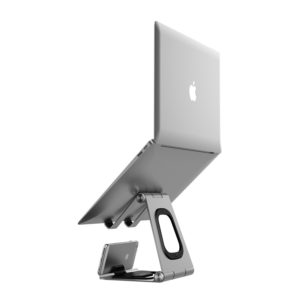 [Click image to enlarge, then the (X) in the upper right hand corner of the image to enlarge further] Because the MacBook is so small, simply placing it on your desk in a comfortable position to view and work with it has one big unfortunate drawback: the built-in iSight web camera is way below your eyeline. That means when you’re doing video (recording, Skyping, etc.) you’re going to look funny – with the iSight shooting up at your face. The fix? This awesome laptop stand that raises your MacBook to just the right height for video work, and…it’s also easier on your neck when doing everyday work, since you don’t have to look down at an angle.
[Click image to enlarge, then the (X) in the upper right hand corner of the image to enlarge further] Because the MacBook is so small, simply placing it on your desk in a comfortable position to view and work with it has one big unfortunate drawback: the built-in iSight web camera is way below your eyeline. That means when you’re doing video (recording, Skyping, etc.) you’re going to look funny – with the iSight shooting up at your face. The fix? This awesome laptop stand that raises your MacBook to just the right height for video work, and…it’s also easier on your neck when doing everyday work, since you don’t have to look down at an angle.
Be sure to pair this with the Logitech Keyboard and trackball, both shown in the Hardware tab – once on the stand, it’s not at all comfortable enough to use the the MacBook’s own keyboard or trackpad any more than occasionally.
Accessories: Desktop Microphone Stand
On Stage Desk Microphone Stand
The ultimate in simplicity and utility, this is the classic desktop stand that adjusts in height, is movable to anywhere you need, and is portable for travel. Screw the stalk into the base, and you’re ready to go. Attaching the AT-2020 microphone to this stand (or any other standard stand) might be a mystery, but we solve that mystery here.
Accessories: Floor Microphone Stand
K & M One-Hand Microphone Stand
When I teach classes and workshops, instead of a desktop mic stand, I use one of these adjustable (with just one hand) floor-standing microphone stands. To adjust the height of the microphone, you just squeeze the clutch’s grip and up or down you go. Let go when the height is right. It’s lightweight and has a three-legged fold out base.
Furniture: Chair
Flash Furniture Red Metal Indoor-Outdoor Chair
I’ve called this “the best upgrade I’ve performed all year.” I used to own a great, comfortable chair – an articulated, fully adjustable, gorgeously designed Aeron-lookalike. $1700. But…it was noisy as hell: every joint, every lever, the wheels, the armrests, the back, the seat…everything about it eventually squeaked and clicked and knocked. Then I got this one-piece, welded, all metal chair, and a cushion from the supermarket, and I’ve never looked back. It’s simple. It’s foolproof. It’s absolutely silent. (It even comes in VO2GoGo Pro red.) And it was 1/30th the cost of my old chair.
Comfort: Personal Cooler
Evapolar EvaSMART EV 3000 Personal Cooler
The thing is, your recording space is likely to get over heated, mostly because you blockade yourself into a small space with blankets, pillows and other insulation. This personal airconditioner, which just sits on the table, not requiring any ductwork out the window, does a great job of cooling things down. You can’t run it while you’re recording, but you can while you’re editing (or just doing admin work) – and it’s evaporative, so it humidifies the space at the same time it cools it. It’s about a cubic foot in size, and mine sits right next to me. It’s awesome. When this product first was crowdfunded on IndieGoGo, I was one of the early early bird backers, and I was really excited when the product came out…and it really worked!
Accessories: Cup Holder
Spring-Loaded Drinklip Table Edge Cup/Drink Holder
I’m always vigilant about liquids in the studio – one spill can really ruin your day. Or week. But I still want to have my water and Starbucks DoubleShots within reach – just not within damaging distance of my equipment.
Enter this little beauty – it’s a spring loaded clip that fits over the edge of any desktop surface, and keeps your drinks separate from the desktop itself. It’s also more of a cup holder, rather than a simple surface, so drinks are unlikely to spill at all (and if they do, they spill on the floor).
Accessories: Moving Blankets
US Cargo Control Moving Pad (6 Pack)
Here are the exact moving blankets my Pro, Caroline, used to isolate herself in a portion of an open room, with great results. These can form soft walls around you and your gear for recording, and can be placed on reflective surfaces to reduce reverberance in an echo-y room. Note that this is a 6-pack of blankets.
Accessories: Hard Drive Cases
AmazonBasics Carrying Case: My Passport
Cheap, hardy and simple. Mine have been holding up beautifully for over three years, protecting the hard drives in them from dust, heat and wear. Get one for each of your backup drives, and one for your external storage drives.
Accessories: MOO Cards
MOO.com Business cards
I love these cards, and the contacts I give them to love them as well. Although MOO has standard size business cards (which I use for the instruction inserts when I send out The Mike Sock), my classic MOO cards, pictured below, are half the height of a typical business card. You can create 100-card sets of them that are identical (like the VO2GoGO and Rehearsal® Pro cards), or with each individual piece sporting a different image on one side of the card (notice my acting cards in the front row of the stand):
Note: stand not included – you can pick that up at Staples or Office Depot.
Accessories: Occasional Lighting
Ivation Gooseneck LED Dimmable Clip Light
When I’m depositing checks or snapping images of my script pages with Rehearsal® Pro, these handy little lamps are perfect for those fairly infrequent moments. Having the lights on in the room I’m in cast shadows on the paper I’m snapping, but having two of these, one on either side of the object, throwing light from both directions, lights things up just right. They are cheap, battery operated, dimmable and either stand on their own, or clip to the edge of my studio desk.
Books: Secrets of Screen Acting
Secrets of Screen Acting (by Patrick Tucker)
The book that taught me everything I know about the technical side of on-camera acting, and opened my eyes wide to the ways to control vocal levels and quality. I can’t recommend this book highly enough.
Books: Brief
Brief (by Joseph McCormack)
When I started listening to this book, I immediately made plans to re-design all my classes, so that students and clients would get the information they needed faster and easier than before. If you present information, this book is a must-read/listen.
Books: Essentialism
Essentialism (by Greg McKeown)
Greg McKeown could narrate audiobooks if he wanted to, but he’s got an even more important calling in life: helping us all strip out the things we’re doing that are unnecessary, unimportant, and non-essential. His take on life, the focus he has on the things that matter, and the practical methods he outlines to achieve this state are phenomenal.
Books: 10% Happier
10% Happier (by Dan Harris)
Nightline anchor Dan Harris embarks on an unexpected, hilarious, and deeply skeptical odyssey through the strange worlds of spirituality and self-help, and discovers a way to get happier that is truly achievable. After having a nationally televised panic attack on Good Morning America, Dan Harris knew he had to make some changes. And as I listened to the changes he made, I could instantly identify with all the doubt he was feeling – the woo woo he was being asked to accept. This book helped me tremendously.
Supplement: Congestion
Lo Han Quo
I was introduced to Lo Han Quo in the 1990s, when being on the air could be a really tricky thing if I had a cold, the sniffles, congestion and the like. I can’t tolerate zinc, but I love this amazing Chinese fruit “tea.” Drop a cube in hot water, sip, and enjoy. Soothes your throat, eases your breathing and tastes really good.
Device: Neti Pot
The Neti Pot
I know. I know. Sounds gross – sticking the spout of this very basic pottery in one nostril, and letting warm, salty water flow out the other nostril, cleansing your nasal passages as it does. An ancient Ayurvedic treatment and preparation, it works like a charm to fight congestion and stuffiness, despite its image. And, it’s cheap.
So…now that you’ve seen mine, what do you use that I’ve left out? Leave a comment below the article and let me know. I’d love to hear your suggestions!
Hope this helps.
David


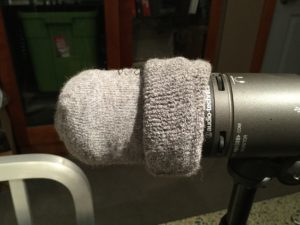
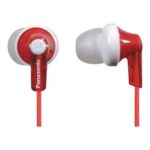
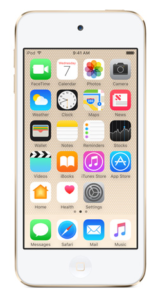
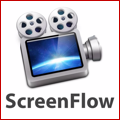
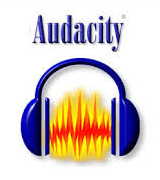
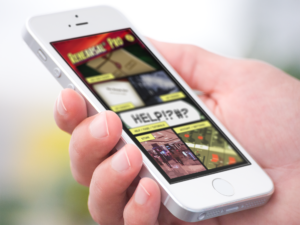
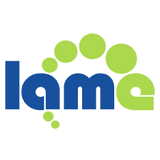
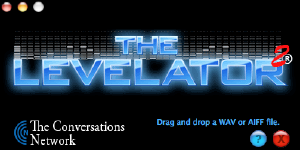
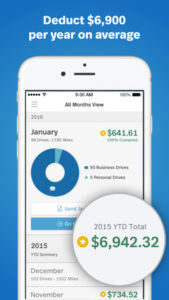
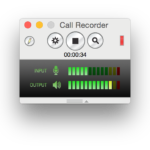

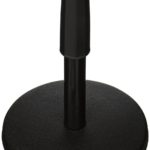
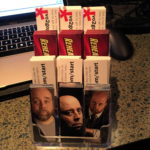
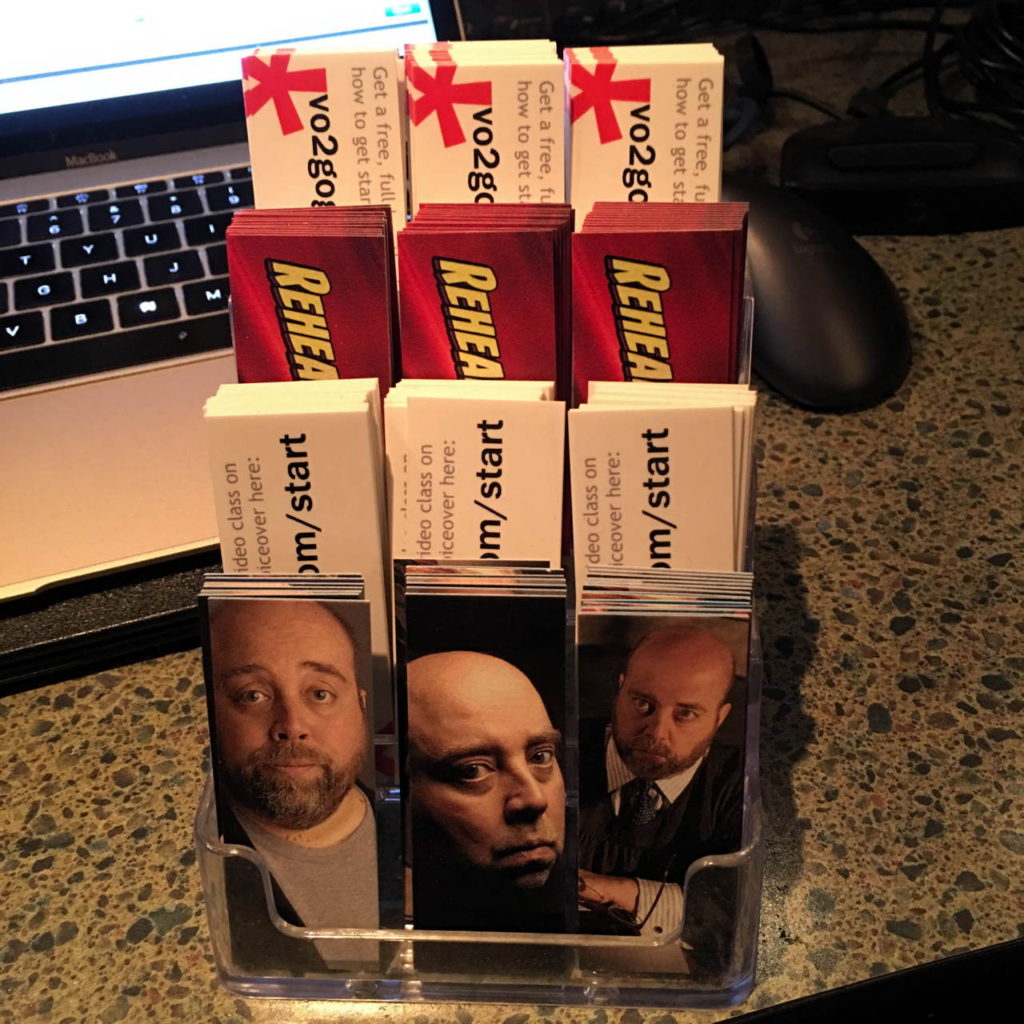
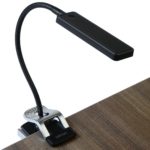
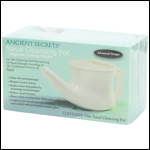
David, I believe that WD has dropped the “Ultra” line from it’s My Passport series. Is there some advantage to that older model?
No…other than a lower price perhaps as they get rid of stock. I’ll correct the entries…but where did you see that stated? They are still being promoted on the WD site:
https://www.wdc.com/products/portable-storage.html
I really wanna see your equipment list! I’ve registered, changed browsers and rebooted and still cannot access the equipment tabs…any ideas?
Perhaps a jumped conclusion, but Amazon gave me the “newer model” prompt several times to the newer non-ultra labeled lineup (grip-textured and more colors). It occurred to me that their might be some other than cosmetic distinction between the two. Thanks.
What about speakers? Or do you do everything through headphones?
I have speakers (several monitoring systems, actually, from a 5.1 reference system, all the way down to a single crappy mono speaker), but I don’t usually use them for my voiceover work. I use them to listen to demos that I produce to make sure that no matter what system someone might be listening on, my clients’ voice is clear.
Just ordered not one but two lav microphones and wondering why on earth I never did this sooner!
Can’t believe how cheap they are – and the difference they must make.
One I’ll use for Selftapes and the other for VO’s.
Can’t wait to test them out! Thank you DL!
Whoa. Don’t use lav mikes for VO – they aren’t mics you can “play”. Use the AT2020 USB Plus, or an equivalent:
https://vo2gogo.com/get-at2020usbplus
Can you talk a little bit more about external storage? You say you only use your internal drive for running applications. I’m out of room on my computer but I’m not sure what, and how to safely move everything I can to an external drive.
There’s nothing really complicated about it. You don’t have to worry about “safely“ moving anything. You just copy. Find what you want to move from your internal drive, and copy it to the extra drive. Once everything is copied you can delete what’s on the internal drive. Then, don’t save anything to the internal drive again. Only save future content to the external storage drive. Begin with your Documents folder, and make sure everything is well categorized in folders that are organized in a way that makes sense.